Malta Starthistle
Information
Centaurea Melitensis - Asteraceae Family
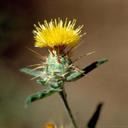
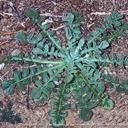
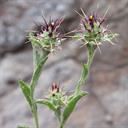
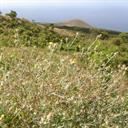
Identification
- Flowers: The flowers are yellow, span up to 1.5 inches, and are surrounded by a ring of sharp tan spines.
- Seeds: Seeds are tan with gray stripes. They are covered with fine hairs and have hooks to encourage spread by contact with other animals. Seeds can survive for up to 3 years in the soil.
- Leaves: The leaves are alternate and narrowly oblong with smooth, toothed margins. They can be covered with stiff, thick hairs and resinous dots.
- Flowering Time: Malta Starthistle flowers from May through September.
- Life cycle: Malta Starthistle sprouts in late fall, remains a basal rosette through the winter, and in the spring grows 1-2 foot stems lined with spiny thorns. It flowers through the summer, producing seed in the fall.
Impacts
- Malta Starthistle produces vigorous early growth and large mats that quickly displace other native species.
- Due to its spiny thorns, Malta Starthistle can reduce an area’s potential for recreation.
- Malta Starthistle has been implicated in the emergence of chewing disease, a neurological disease in horses.
Control
Most effective control methods
- Small infestations of Malta Starthistle can be effectively controlled by manually pulling and disposing in the trash prior to seed production.
- Biological control is largely ineffective. It is a poor grazing plant due to its thorns and toxicity. Animals avoid it if possible.
- When applied just before flower production, chemical control can be effective in controlling Malta Starthistle populations.
Large Images
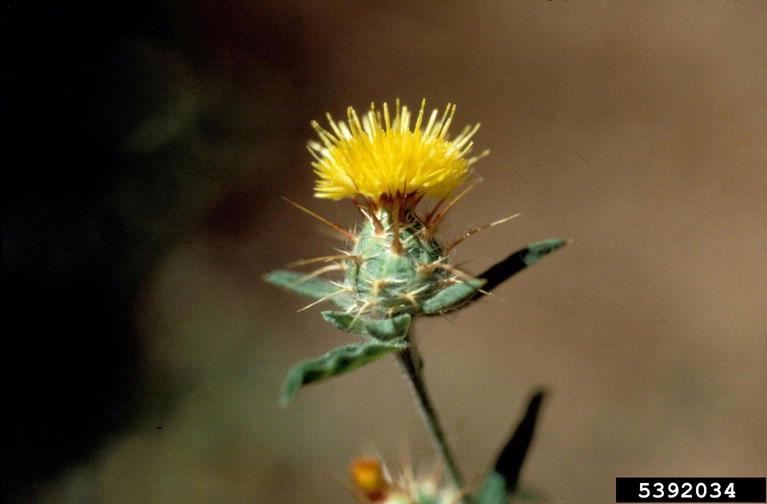
Malta starthistle: flower
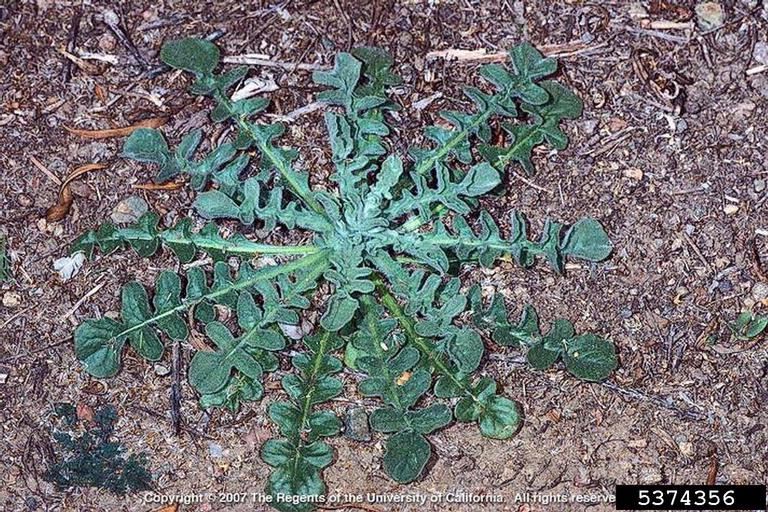
Malta starthistle: rosette
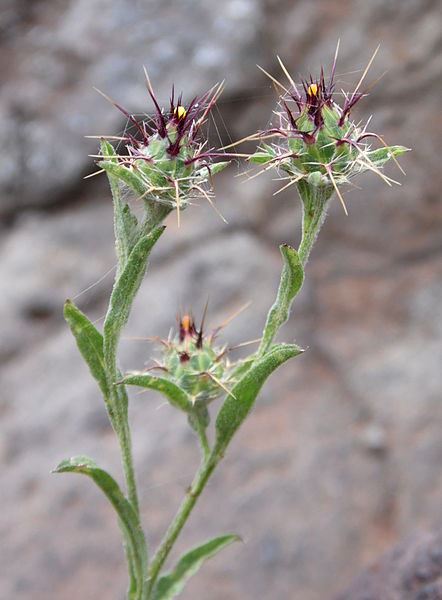
Malta starthistle: flower

Malta starthistle: infestation
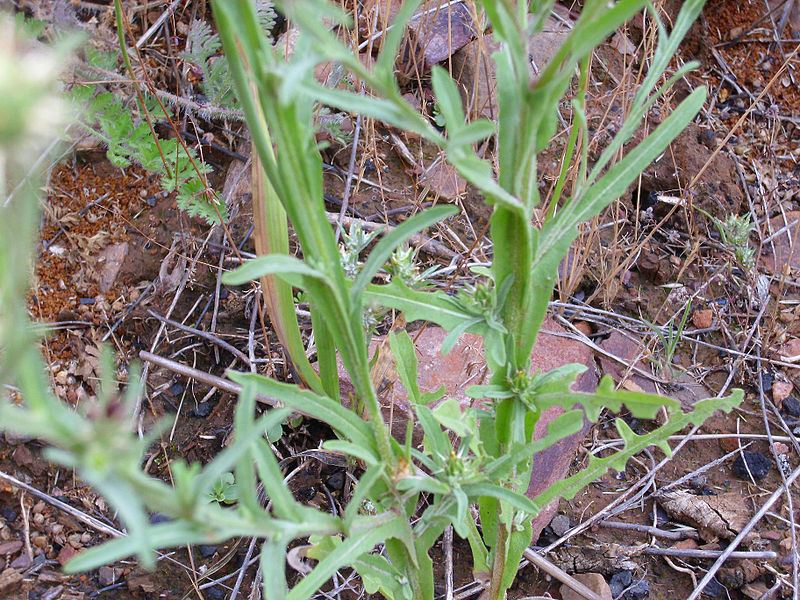
Malta starthistle: foliage
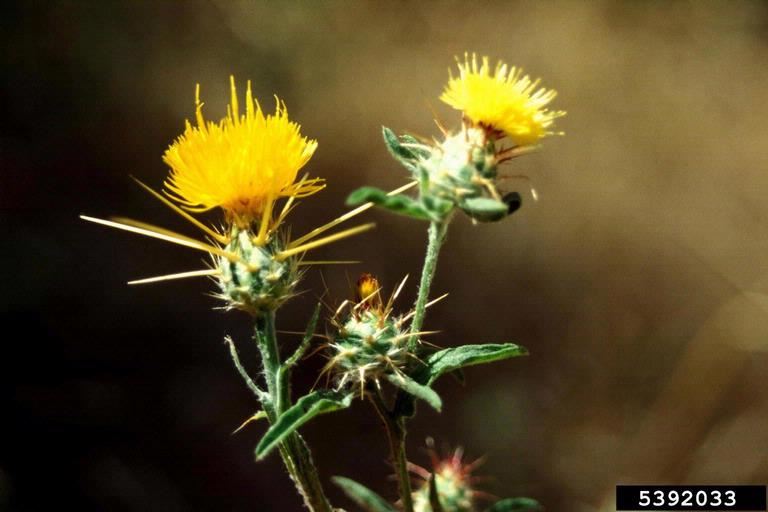
Malta starthistle: flowers
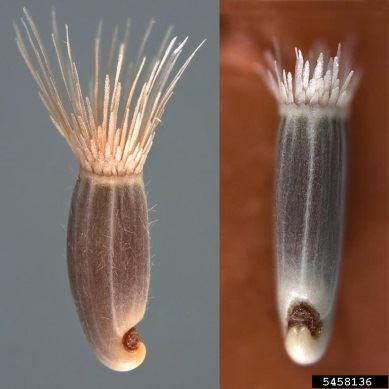
Malta starthistle: seeds
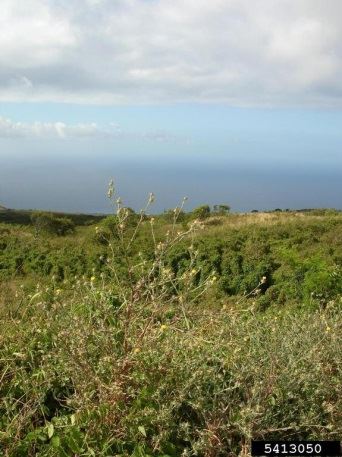
Malta starthistle: infestation
Resources
-
References
Bowman, G. (2016, May). Malta Starthistle, Maltese Starthistle (Centaurea Melitensis) [PDF file]. Retrieved from https://txmg-wpengine.netdna-ssl.com/williamson/files/Malta-Star-Thistle.pdf View PDF
California Invasive Plant Council. IPCW plant report: Centaurea melitensis. Retrieved from https://www.cal-ipc.org/resources/library/publications/ipcw/report27/
DiTomaso, J.M., G.B. Kyser et al. (2013). Weed Control in Natural Areas in the Western United States [PDF file]. Weed Research and Information Center, University of California. Retrieved from https://wric.ucdavis.edu/information/natural-areas/wr_C/Centaurea_melitensis.pdf View PDF
Donaldson, S., & Rafferty, D. (2011, April 19). Identification and management of Malta starthistle (centaurea melitensis L.) [PDF file]. Retrieved from http://www.unce.unr.edu/publications/files/nr/2002/fs0286.pdf View PDF
United States Department of Agriculture. (2015, February). Field guide for managing Malta starthistle in the southwest [PDF file]. Retrieved from https://www.fs.usda.gov/Internet/FSE_DOCUMENTS/stelprdb5410119.pdf View PDF
Washington State Noxious Weed Control Board. Malta starthistle. Retrieved from https://www.nwcb.wa.gov/weeds/malta-starthistle




